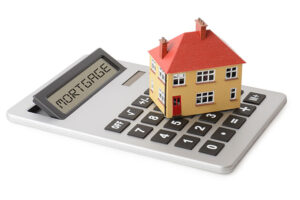Oct 11, 2024
How to Choose the Right Home Mortgage in Australia
Australia’s real estate market is known for its diversity and dynamism, making it a popular choice for both first-time homebuyers and seasoned investors. With cities like Sydney and Melbourne often leading the charge in property prices, it’s essential to understand the nuances of the market before diving in. The Australian property market has seen fluctuations in demand, driven by factors such as population growth, urban development, and economic conditions. As a result, homebuyers must be well-informed to navigate these complexities and secure the best mortgage options available.
When considering a home mortgage in Australia, it’s vital to understand how the real estate landscape affects borrowing. Whether you’re looking to purchase a family home or an investment property, the type of mortgage you choose can significantly impact your financial future. With numerous lenders, varying interest rates, and a range of mortgage products available, making the right decision can be daunting. This guide will help you navigate the key factors to consider when selecting a home mortgage in Australia.
- Understand Your Financial Situation
Before you start looking for a mortgage, take the time to assess your financial situation. Review your income, expenses, savings, and credit history. Understanding how much you can afford to borrow will give you a clearer idea of the type of mortgage that suits your needs. Lenders typically consider your income-to-debt ratio, so ensure you’re in a stable financial position before applying.
- Explore Different Mortgage Types
In Australia, various mortgage types are available, including fixed-rate, variable-rate, and interest-only loans.
Fixed-rate mortgages offer stability with fixed interest rates for a set period, usually between one and five years. This can provide peace of mind if you prefer predictable repayments.
Variable-rate mortgages, on the other hand, have interest rates that fluctuate based on market conditions. While they can lead to lower repayments if rates drop, they also carry the risk of increased repayments if rates rise.
Interest-only loans are designed primarily for investors, allowing borrowers to pay only the interest for a specified period. While this can improve cash flow initially, it’s essential to understand the long-term implications.
- Compare Lenders and Interest Rates
Take the time to shop around and compare different lenders and their mortgage products. Look beyond just interest rates; consider fees, flexibility, and customer service. Many online tools can help you compare rates and find the best deal for your situation. Remember, even a small difference in interest rates can lead to significant savings over the life of your loan.
- Consider Additional Costs
When choosing a mortgage, remember to factor in additional costs beyond the loan itself. These can include:
Stamp duty: A tax imposed on property purchases that varies by state and territory.
Lender’s mortgage insurance (LMI): Required for loans with a deposit less than 20%, LMI protects the lender if you default on your loan.
Conveyancing fees: The legal costs associated with transferring property ownership.
Ongoing fees: Some lenders charge annual or monthly fees for maintaining your mortgage account.
Understanding these costs will help you budget appropriately and avoid surprises down the line.
- Get Pre-Approved
Once you have a clear understanding of your finances and mortgage options, consider seeking pre-approval from a lender. This process involves providing documentation to the lender, allowing them to assess your financial situation and offer a loan amount. Pre-approval can give you a competitive edge when making an offer on a property, as it shows sellers you are serious and capable of securing financing.

- Seek Professional Advice
Navigating the mortgage landscape can be overwhelming, especially for first-time buyers. Engaging with a mortgage broker or financial advisor can provide you with valuable insights and help you find a loan tailored to your needs. These professionals have access to a wide range of lenders and can assist in negotiating better terms on your behalf.
Choosing the right home mortgage in Australia requires careful consideration of your financial situation, an understanding of different mortgage types, and thorough research on lenders and costs. By following these steps and seeking professional advice, you can make an informed decision that sets you on the path to homeownership. Remember, securing the right mortgage not only impacts your immediate financial situation but also influences your long-term financial health, so take the time to make the best choice for your future.























